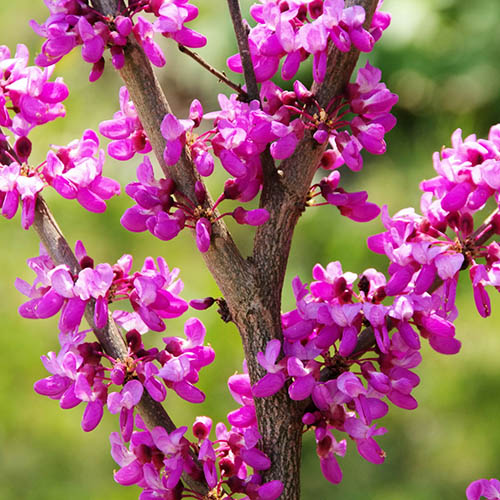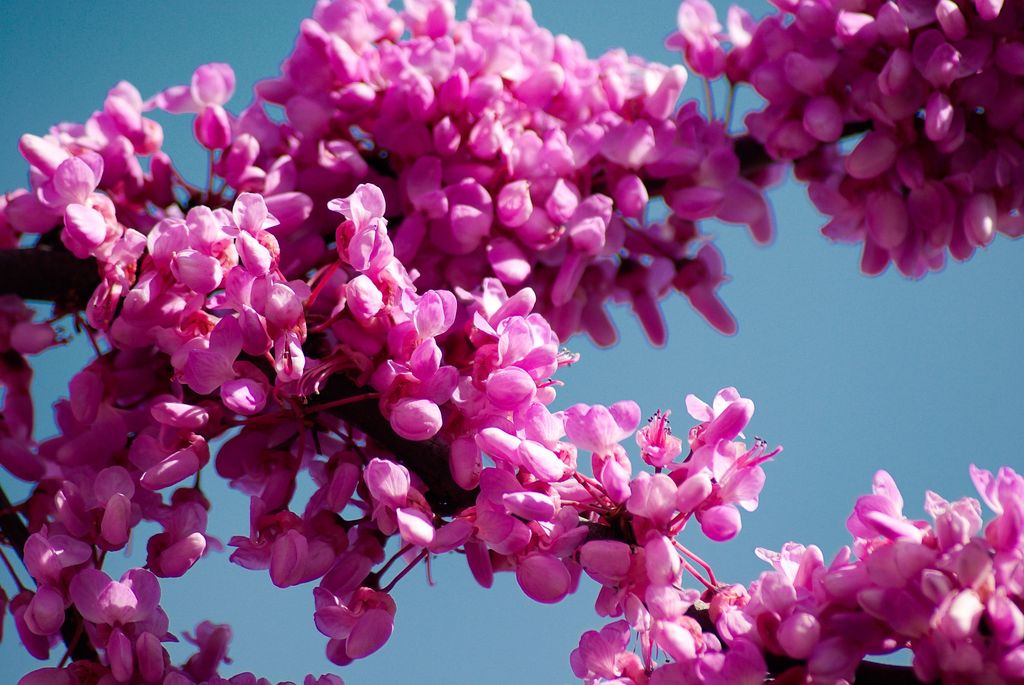Originally from the Middle East and Asia Minor, the Judas tree ( Cercis siliquastrum ), from the Fabaceae family, was probably introduced to France at the time of the Crusades.
Also known as redbud , it is an elegant and hardy naturalized ornamental tree, common in parks and gardens. It is covered with flowers in the spring, sometimes very early, in April or May. However, you have to wait four or five years to obtain a flowering, the time it settles and makes its roots.
Recognize the Judas tree
The Judas tree is easily recognizable by its low silhouette (6-8 meters maximum), its spreading (3 to 5 meters) and rounded habit, its twisted branches and its dense foliage.
When young, its bark is dark gray and smooth, then tight vertical streaks with rough ridges appear with age.
It develops rounded leaves 10 cm wide, smooth, bluish green, which take on a beautiful golden color in the fall.
Planting and care of Cercis siliquastrum
All soils are suitable for the Judas tree as long as the soil is deep, even if it has a preference for slightly calcareous soils. It likes exposure to full sun and situations sheltered from cold winter winds. It thus succeeds very well in the south.
Regular watering is necessary in the summer of planting in the garden. It is advisable to mulch it with dead leaves the first few years to protect it from severe frosts.
It can be pruned each year after flowering to maintain a shrubby habit.
Two particularities of Cercis siliquastrum

The Judas tree flowers before the leaves appear, sometimes even directly on the trunk itself. Its flowers are in the shape of butterflies, of a strong pink, and evolve into brown pods of 10 centimeters which remain on the tree until winter. Its flowers are edible and can be used to garnish salads if the tree is not treated.
Like all trees of the Fabaceae family , the Judas tree enriches the soil that supports it. Its roots form nodules in which live bacteria capable of fixing nitrogen from the air, and making it assimilable in the form of nitrates for plants.
Judas tree
According to legend, Judas Iscariot , one of Jesus’ twelve apostles, hanged himself from this tree after betraying Jesus by facilitating his arrest. Hence the symbolism associated with it: the pink flowers that appear along the trunk would be Judas’ tears of shame for his betrayal.
Multiplication
The Judas tree layers very easily. Its sowing is also possible but it is more restrictive since it requires a prolonged cold period, the seeds having to remain stored for two months in the refrigerator at 5°C.

